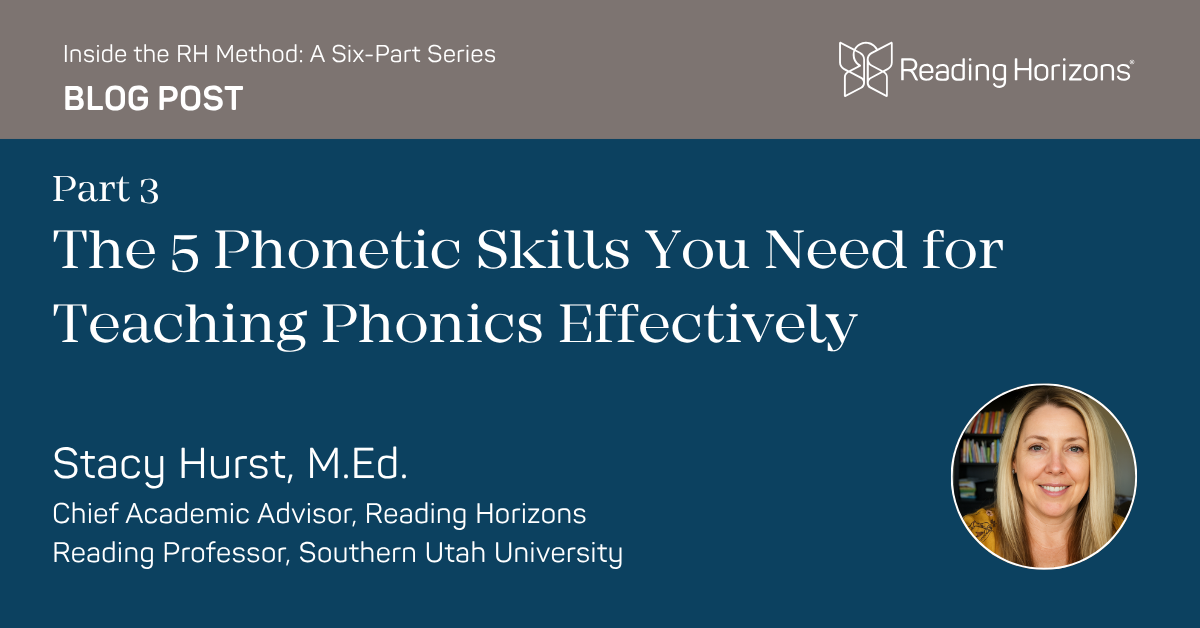By Stacy Hurst
This post is Part 3 of a six-part series, “Inside the RH Method,” exploring how the science of reading connects to daily classroom practice.
The Five Phonetic Skills: More Than Just Syllable Patterns
Let’s face it: English is a tricky language to learn and teach. It’s full of surprises—especially when it comes to vowels. I can’t tell you how many times students (and teachers!) have thrown up their hands and said, “This doesn’t make any sense!” I’ll never forget the day when a kindergartner, upon learning about silent e, exclaimed, “You mean there are letters that DON’T make sounds?!”
But here’s the thing—the English spelling system does make sense. You just need a framework that makes the patterns visible in a simple to more complex order, starting with long and short vowel sounds. That’s exactly what the Five Phonetic Skills in the Reading Horizons (RH) Method do.
Yes, they align with familiar syllable patterns (Closed, Open, VCe, and Vowel Teams), but they’re so much more than that. These five skills serve a few powerful purposes that go way beyond basic decoding.
Why the Five Phonetic Skills Matter
Here’s what they really do:
- They help students figure out if a vowel is long or short.
And this is huge. Vowels can spell so many different sounds depending on the letters around them (because English is graphotactic—meaning letter sounds, especially vowels, are often determined by letters that follow the vowel). That’s a complicated concept to explain, but this framework makes it doable—even for first graders. - They make spelling rules (especially suffixes) easier to teach.
Seriously. Teaching kids when to double a consonant before adding -ed or -ing becomes so much simpler when they’ve learned Skills 1, 2, and 4. - They give students a clear way to understand the many jobs of “y.”
Whether “y” is standing in for a long /e/ or a long /i/, or showing up in multisyllabic words, this framework makes it easy to explain and apply. - They unlock proficient syllabication.
Once students can recognize these patterns and spellings for other vowel sounds, they’re ready to divide and conquer multisyllabic words. In fact, by teaching the first 3 phonetic skills, you’ve already taught around 72% of any type of syllable a student will encounter. RH’s 2 Decoding Skills build on this beautifully (but that’s a blog post for another day).
I’ve taught all of this in many instructional settings, currently in my tutoring, and I can tell you—it works. These aren’t just abstract rules. They’re tools students actually use when they read and write.
What the Skills Actually Are
Here’s a quick look at the Five Phonetic Skills as they’re taught in the RH Method.
Phonetic Skill 1
A vowel followed by one consonant sound = short vowel sound. (Think cat.)

Phonetic Skill 2
A vowel followed by two consonant sounds = short vowel sound. (Think jump.)
This one may feel like a repeat of Skill 1, but trust me—it’s essential when teaching how to add suffixes and how to identify syllables in multisyllabic words.
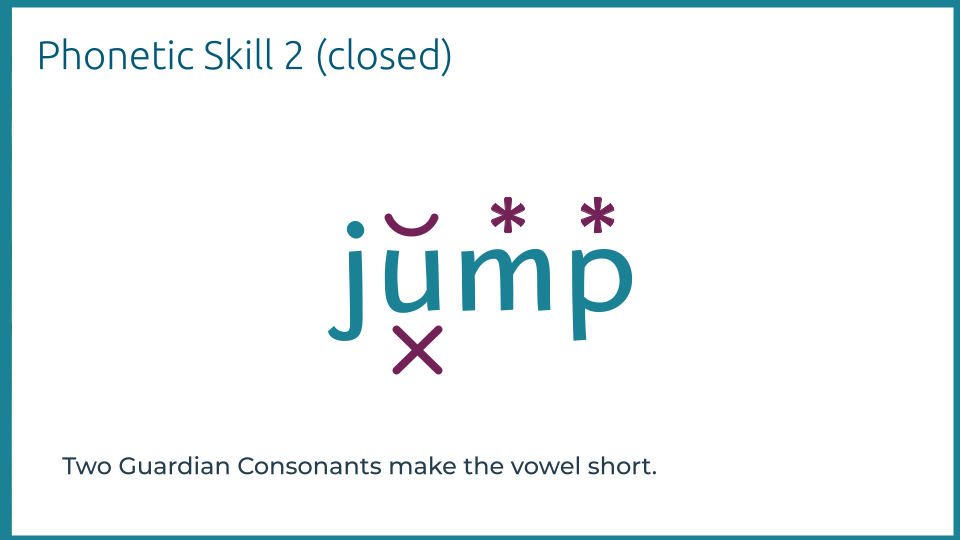
Phonetic Skill 3
A vowel at the end of a word or syllable = long vowel sound. (Think go or the first syllable of robot. This is a very common syllable type in multisyllabic words and some high frequency single-syllable words like go, me, and we).
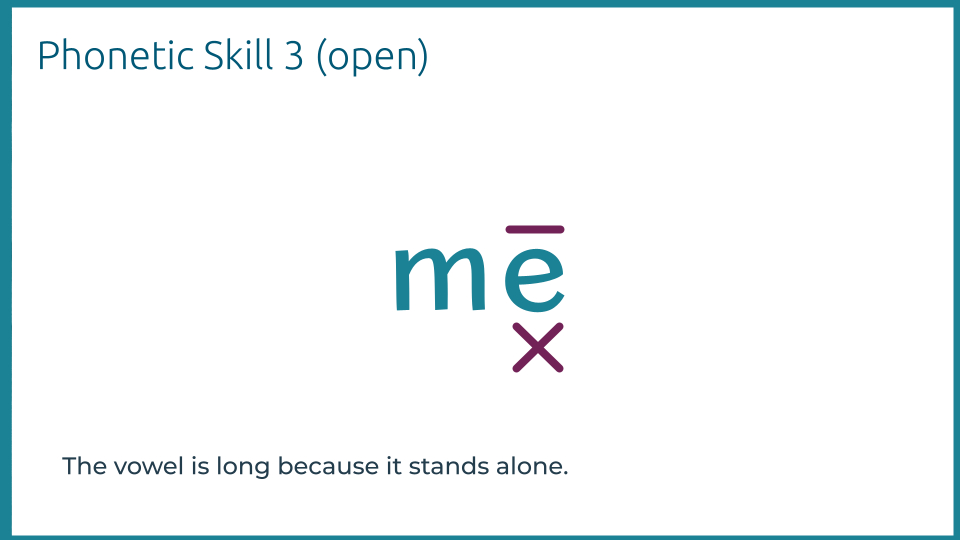
Phonetic Skill 4
A silent “e” following another vowel and consonant makes the preceding vowel long. (Think made.)
This was one of my favorite things to teach as a first grade teacher because the RH Method made it so easy to explain and build on.
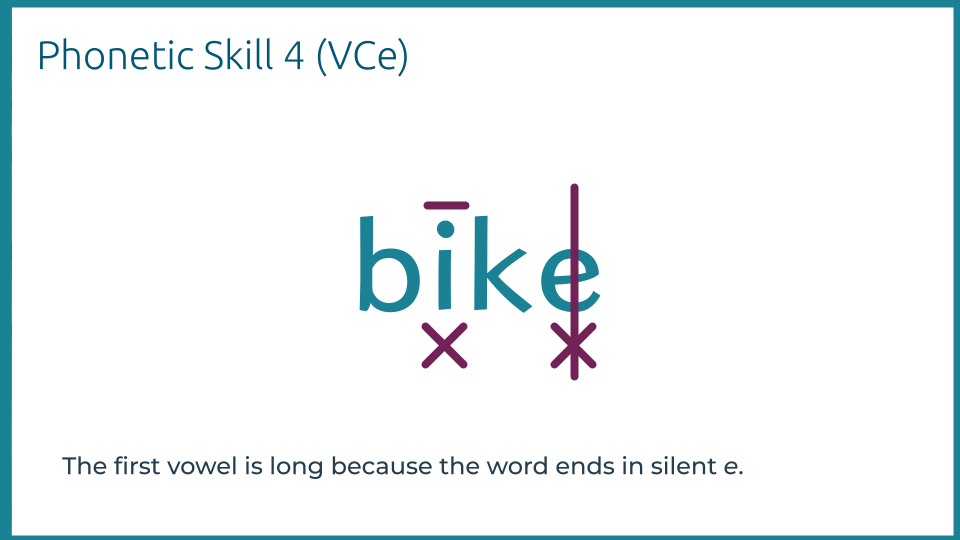
Phonetic Skill 5
Two specific adjacent vowel combinations (e.g. ea or ai) = one long vowel sound. (Think team or rain.)
This one’s also super helpful for teaching spelling patterns. For example, the long /ā/ sound at the end of a word is usually spelled “ay” (ray), while in the middle, it’s spelled “ai” (rain).
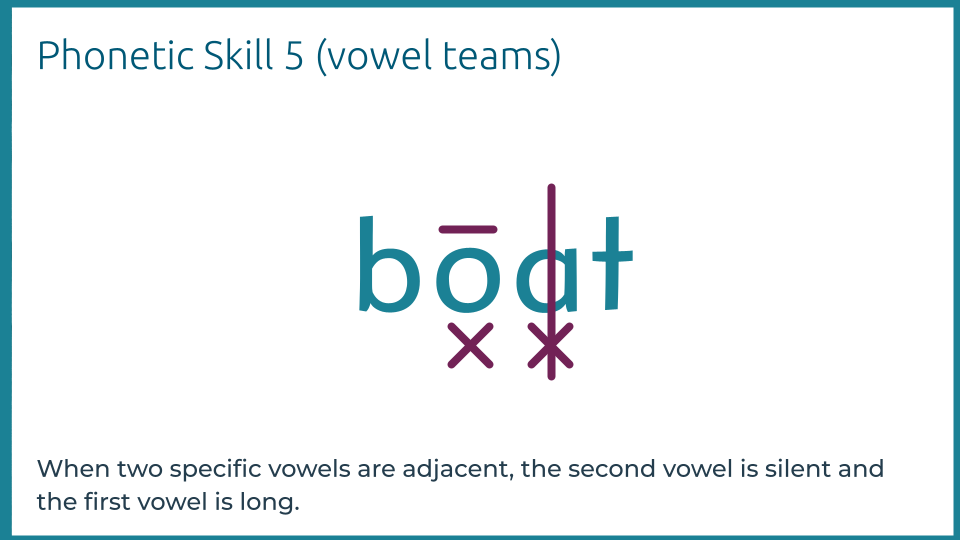
And yes—there are other vowel sounds (i.e. syllable types) that are neither long nor short (R-controlled vowels, -CLE, variant vowels (e.g. oo) and vowel diphthongs (e.g. oi and oy), and the RH Method teaches those too. But the Five Phonetic Skills come first for a reason. Once students have mastered them, they’re ready for more. And the progression makes sense, so students aren’t juggling a million rules all at once.
From Patterns to Proficiency
When I started using this method, I finally had a way to explain vowel sounds, suffixes, spelling rules, syllable division—even the role of “y”—in a way that didn’t leave students confused or overwhelmed. Combined with loads of practice applying these patterns through reading and spelling, students succeed!
So no, the Five Phonetic Skills aren’t just certain syllable patterns. They’re a powerful framework for helping students unlock the logic behind the English language.
If you’re looking for a quick reference, you can grab the free bookmark with the Five Phonetic Skills and Two Decoding Skills here:
👉 Download the Bookmark (PDF)
And if you’re new to the RH Method, I can’t recommend the free Teacher Edition of Reading Horizons Discovery enough. It’ll walk you through all of this in a way that’s clear, practical, and classroom-tested. Sign up today.
Happy decoding!
Read Part 2 in the series or move on to Part 4.
